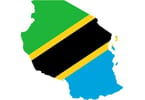Lipula tse matla le likhohola tse ka boroa ho Afrika li sentse libaka tse kholo tsa masimo le lijalo, Mokhatlo oa Machaba a Kopaneng oa Lijo le Temo (FAO) o boletse kajeno, o lemosa hore baahi ba libaka tse futsanehileng tsa sebaka sena ba ka ba le khaello ea lijo likhoeling tse tlang.
"Maemo a khaello ea lijo a se a ntse a le mahlonoko libakeng tse amehileng tsa tse ling tsa linaha tsena 'me likhohola li tla mpefatsa le ho feta bokhoni ba lihoai tse futsanehileng tsa ho sebetsana ka katleho le ho fepa malapa a bona likhoeling tse tlang," ho boletse Cindy Holleman, Mohokahanyi oa Boemo ba Tšohanyetso oa FAO bakeng sa Boroa. Afrika.
Setsi sena se sebetsa le lits'ebetso tsa temoso tsa tikoloho le tsa naha ho lekola tsoelo-pele ea linōka tse kholo le ho lekola phello ea lijalo tsa lijo.
Sebaka sena se bohareng ba nako ea lipula 'me nako ea maholiotsoana e lokela ho ba sehlohlolong khoeling ena, boemo bo behang libaka tse' maloa tsa temo haufi le linoka linaheng tse ka boroa ho Afrika - Botswana, Lesotho, Mozambique, Namibia, Zambia, Zimbabwe le Afrika Boroa. - kotsing e kholo ea likhohola, ho latela FAO.
Ka mohlala, naheng ea Lesotho, e ’ngoe ea linaha tse futsanehileng ka ho fetisisa seterekeng, sehlopha sa FAO se hlahlobang hore libakeng tse ling tse nang le likhohola, ho lahleha ho fihla ho karolo ea 60 lekholong ea kotulo le mehlape e fetang 4,700 XNUMX, haholo-holo linku. lipōli li shoele.
Tahlehelo ea lijalo sebakeng sa heno e boetse e tlalehoa mabopong a noka ka boroa le bohareng ba Mozambique. 'Muso o phatlalalitse tlhokomeliso e khubelu bakeng sa Mozambique e bohareng le e ka boroa ha metsi a phallang linōkeng tse kholo a le ka holim'a maemo a hlokolosi.
Afrika Boroa e se e phatlalalitse boemo ba naha ba tlokotsi literekeng tse ngata tsa naha ka lebaka la likhohola tse sentseng lihekthere tse likete tsa mobu oa lijalo, 'me li bakile tšenyo e hakanyetsoang ho limilione tsa lidolara.
FAO e nka karolo litekong tse fapaneng tsa phello ea likhohola ho pholletsa le sebaka seo le ho fa mebuso likeletso tsa tekheniki mabapi le lits'ebetso tsa ho lekola likhohola, boitokiso le mehato ea ho thibela ho qhoma kapa ho ata ha mafu a liphoofolo, ha ka nako e ts'oanang e ntse e itokisetsa mehato e ka bang teng ea lithuso tsa temo joalo ka phano ea boleng. peo, le ho khutlisetsa mesebetsi ea temo ka mor'a hore metsi a likhohola a fokotsehe.
SEO U LOKELANG HO SE NKA HO SEHLOOHO ENA:
- The region is half-way through the rainy season and the cyclone season is due to peak this month, a situation that puts several agricultural areas along the rivers in southern African countries – Botswana, Lesotho, Mozambique, Namibia, Zambia, Zimbabwe and South Africa – at high risk of flooding, according to FAO.
- FAO is participating in various flood impact assessments throughout the region and providing governments with technical advice on flood monitoring systems, preparedness, and measures to prevent the outbreak or spread of animal disease, while simultaneously preparing for possible agricultural aid interventions such as the delivery of quality seeds, and restoring agricultural activities after flood waters recede.
- In Lesotho, for example, one of the poorest countries in the sub-region, an FAO assessment team found that in some of the flooded areas, up to 60 per cent of the harvest has been lost and more than 4,700 livestock, mainly sheep and goats have died.






















